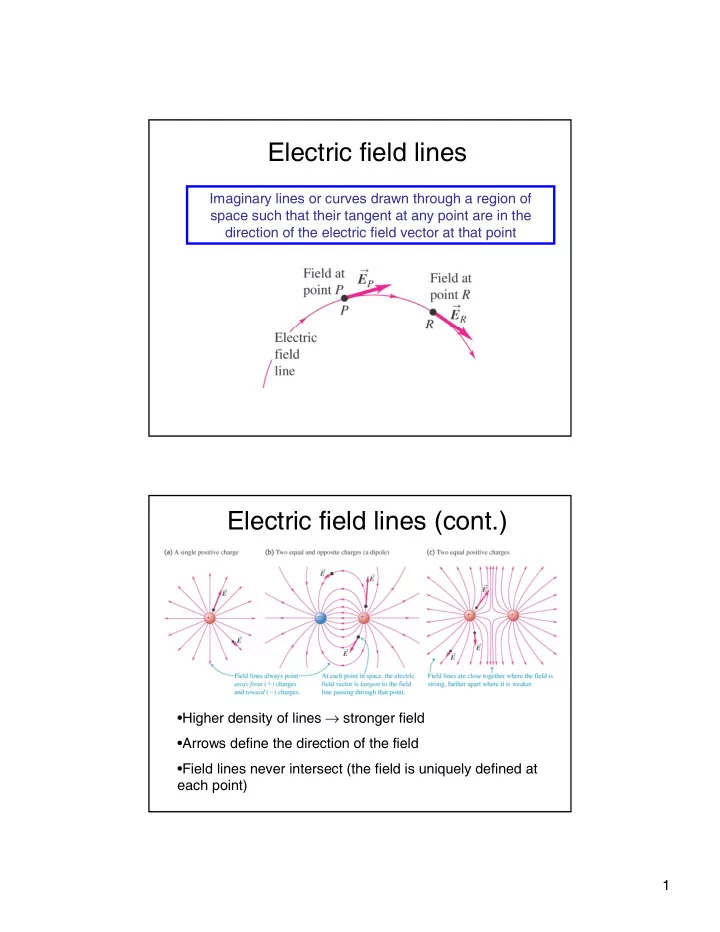

Electric field lines Imaginary lines or curves drawn through a region of space such that their tangent at any point are in the direction of the electric field vector at that point Electric field lines (cont.) •Higher density of lines → stronger field •Arrows define the direction of the field •Field lines never intersect (the field is uniquely defined at each point) 1
Lines of Electric Field How many field lines cross out of the circle? 8C ⇒ 8 lines 16C ⇒ 16 lines 32C ⇒ 32 lines 8C 16C 32C 2
Lines of Electric Field How many field lines cross out of the surface? 8C ⇒ 8 lines 16C ⇒ 16 lines 32C ⇒ 32 lines 8C 16C 32C Lines of Electric Field How many field lines cross out of the surface? ZERO!!! 3
Gauss’s law Number of lines crossing the closed surface: 0!!! Observations • Charges outside the surface do not contribute to the sum • The number of lines crossing the surface is proportional to the net amount of charge inside • The number of crossing lines is independent of the shape of the surface http://www.youtube.com/watch?v=5ENl4vn82bc&NR=1 http://webphysics.davidson.edu/physlet_resources/bu_semester2/index.html 4
Gauss’s Law : Cartoon Version The number of electric field lines leaving a closed surface is equal to the charge enclosed by that surface Σ (E-field-lines) α Charge Enclosed N Coulombs ⇒ α N lines Flux of a uniform field Φ = = ϕ = ⋅ = ⋅ r ˆ E A EA cos E r A ( E r n ) A ⊥ E 5
General expression for electric flux E ⊥ r E dA For an arbitrary surface, take the component of E perpendicular to the surface at that point, E ⊥ ,and integrate over the surface Φ = ⋅ = ⋅ = ⋅ E r d A r E r n ˆ dA E ⊥ dA ∫ ∫ ∫ E Flux though a cube 6
Flux through a sphere The field is always perpendicular to the surface: 1 q q Φ = = π 2 = EA ( 4 R ) E πε ε 4 R 2 0 0 Two spheres with different radii 1 q q Φ = = π = EA ( 4 R 2 ) E πε 2 ε 4 R 0 0 The flux does not depend on the area, only on the charge enclosed by it!!! 7
Gauss’s Law – The Idea A point charge outside a closed surface that encloses no charge: If an electric field line from the charge enters the surface at one point, it must leave at another Charges are “sources” of flux: electric lines can only begin or end inside a region of space only when there is a charge inside Gauss’s Law – The Idea The total “electric flux” through any of these surfaces is the same and depends only on the amount of charge inside 8
General form of Gauss’ law Q Φ = ⋅ = r E r d A E ∫ ε 0 9
Recommend
More recommend